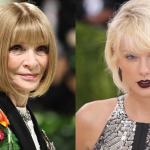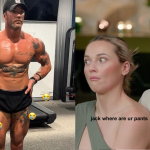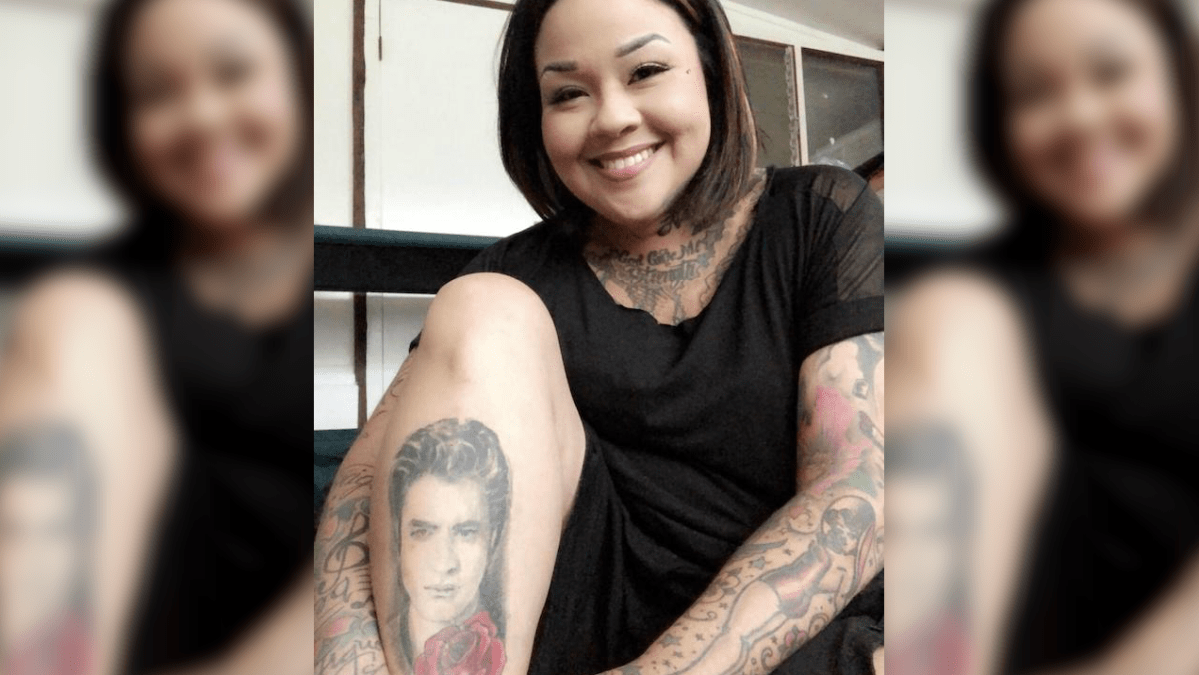
Thirteen thousand kilometres from Forks, Washington, and ten years after a film series first imagined its forests crawling with vampires and werewolves, there lies a shrine to one of the most beloved and belittled stories ever told.
“I have one of the best Twilight collections in Australia, and I am so damn proud of it,” says its keeper. Her reverence borders on the religious. “My name is Hayley Hamilton, I’m 37, I’m from Melbourne, Australia, and I’m a Twihard.”
[jwplayer L1QwzX5f]
Hamilton’s collection of Twilight memorabilia isn’t why I reached out. Not strictly speaking, at least. Her private museum extends further than paraphernalia from Stephenie Meyer’s landmark book series and the five blockbuster films it inspired. Her body reflects a permanent devotion in the form of three tattoos, each commemorating an aspect of the saga.
The first reads “plus que ma propre vie,” a French inscription meaning “more than my own life.” It’s drawn from a locket protagonist Bella Swan gives her first child with the brooding vampire Edward Cullen, the result of the all-encompassing relationship which captivated millions of readers worldwide. It’s “what’s commonly referred to as a tramp stamp on my lower back,” Hamilton says.
The second is derived from Edward’s speech at the couple’s wedding, attended by mortals and the supernatural alike: “No measure of time with you will be long enough,” it reads. It runs down the entirety of Hamilton’s side.
Her third tattoo is the simplest. It is also the most intriguing. Inscribed on her wrist is a single word, inked in Edward’s scrawl: “Forever”.
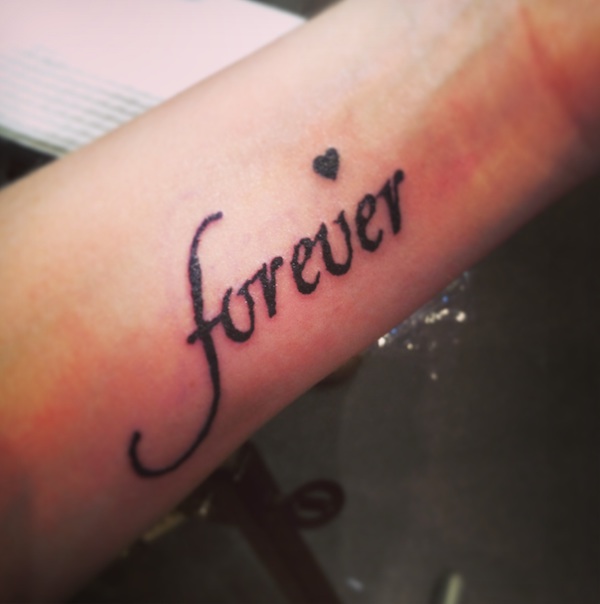
Forever is a long time, but the ten years since Twilight first premiered on US screens in November 2008 feel longer. It’s definitely long enough to contend with Twilight’s complicated legacy.
Catherine Hardwicke’s movie was an international hit, notching the highest opening weekend box office numbers of any film directed by a woman at the time. It proved what many already knew: that audiences respond when the lived experiences of teen girls are treated seriously, and granted dramatic heft. But it also inspired other studios to produce more moody, teen-centric epics, many of which eventually superseded Twilight’s silver screen dominance. The Hunger Games series took Twilight’s life-or-death stakes, but presented audiences with a heroine who wasn’t consumed by a sparkling centenarian; Fifty Shades Of Grey, itself a piece of Twilight fanfiction, recontextualised Twilight’s obsessive adolescent yearning and chronic abstinence as an adult tale of sex, submission, and domination. The markets for young adult literature and fan fiction grew up, and in 2018, it appears they have left vampires behind.
A generation of Twihards also finds itself reckoning with the fact the film’s stars do not share their enduring passion. Leads Kristen Stewart and Robert Pattinson have both expressed complex relationships with the saga, and their post-Twilight careers have tilted away from a love story criticised as cloying at best, to misogynistic and abusive at worst. Then there’s the very real prospect that today’s young audiences, conversant in ghosting and gaslighting and fuckbois, might outright reject Twilight’s central romance if it were to debut today.
Short of filing one’s teeth to sharp points, Twilight tattoos struck me as the most enduring physical bond a Twihard could make to the series. I wanted to discuss the saga’s legacy with fans who shared Hamilton’s “forever” commitment. I asked around.
My callout to was met with a heated mix of second-hand embarrassment and suspicion, as if the answer was self-evident. Twilight is goddamn Twilight, the bulk of responses seemed to say, like interrogating folks with Twilight ink would only relitigate rash adolescent decisions.
Someone responded by sending me an image split in two halves. On the left, a promotional shot of Pattinson as Edward, glowering at the camera, and on the right, the same photo accurately rendered as a tattoo.
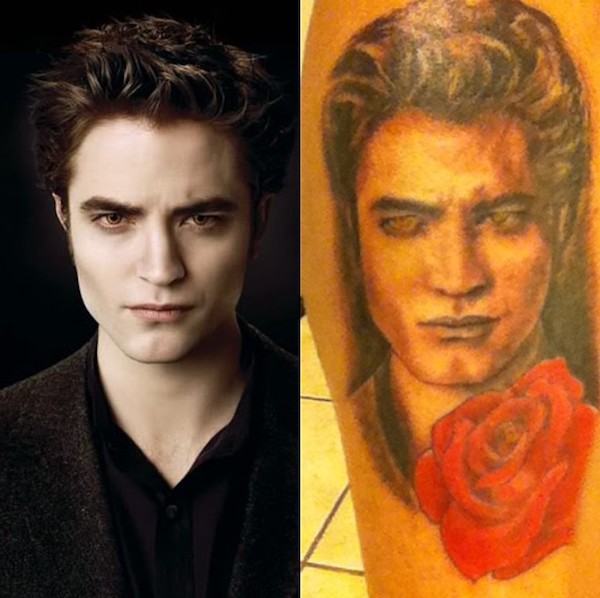
“Track this person down and see if she covered it up,” they wrote.
I did. She hasn’t. In fact, Hawaii local Sheena Leigh Galbraith says the only thing keeping her from expanding the artwork is the fact her favourite artist rarely swings by the islands.
“I still love my tattoo,” the 34-year-old beauty technician says. “I plan on touching up his eyes, and I’d love to add to it.”
Her appreciation for Edward runs deep. She recalls the genesis of her fandom with a warm enthusiasm, and details the impromptu campsite she established before her local Twilight premiere.
“I literally put up like a half tent, had a blowup mattress, some of my family, and friends came, and we had this big set-up,” she says.
“Coolers, army cots, laptops… You name it. We came prepared.”
To hear her speak about her fandom is to be somewhat disarmed, to temporarily forget that people could dismiss something so central to her life. Of course, people do.
“Some people thought I was crazy ‘cause people don’t do that here on this little island,” she says. “People drove past us all night yelling stuff, which was utterly hilarious.”
I ask about direct responses to the tattoo, which is plainly visible across her shin.
“Just some petty remarks that didn’t bother me,” she says, “like, ‘I can’t believe you put a sparkly vampire on your body. That’s crazy.’”
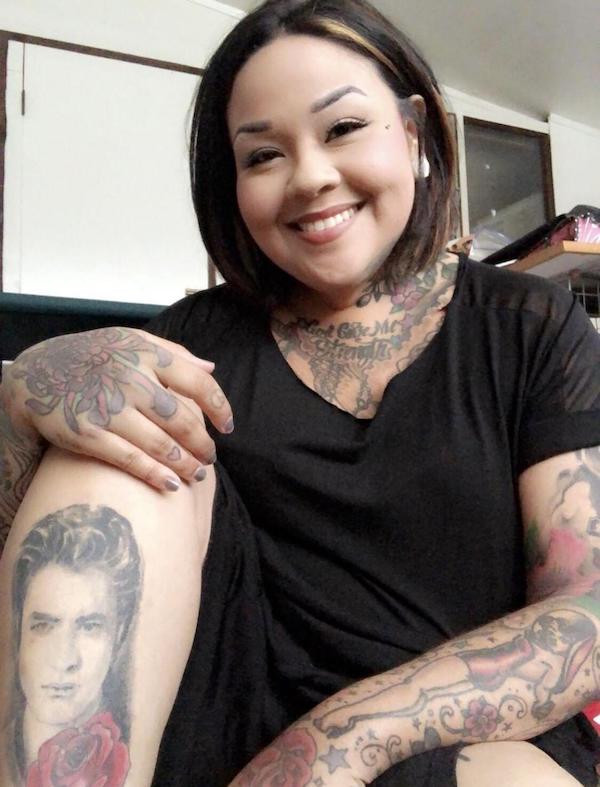
‘Crazy’ is a word Twihards have grown accustomed to hearing. It’s a word that has dominated discussions of the series’ adherents since they first demonstrated their collective focus, and since they first tested boundaries with the young stars they so openly worshipped.
“People are crazy,” Stewart told GQ 2012, referencing her wilder experiences at the peak of Twilight’s mainstream popularity. “Everyone does what they have to do to protect themselves, but it would be fake for me to sit here and say people are not crazy.”
“I guess people want it to define them, like, ‘I’m a Twilight fan’. That’s crazy to me,” Pattinson told Vanity Fair the year before.
“Why is it ok to be obsessed with Harry Potter but not Twilight? Why is it ok to be obsessed with your favourite sports team?,” asks Nikki Kussrow, whose personal collection of Twilight memorabilia in Toowoomba rivals any on Earth – including the trove protected by her friend Hamilton.
“I got a baby blanket and one of Renesmee‘s costumes from [Breaking Dawn – Part 2] which I have displayed in a glass case,” she tells me. The photos, provided without prompt, prove as much. And so much more.
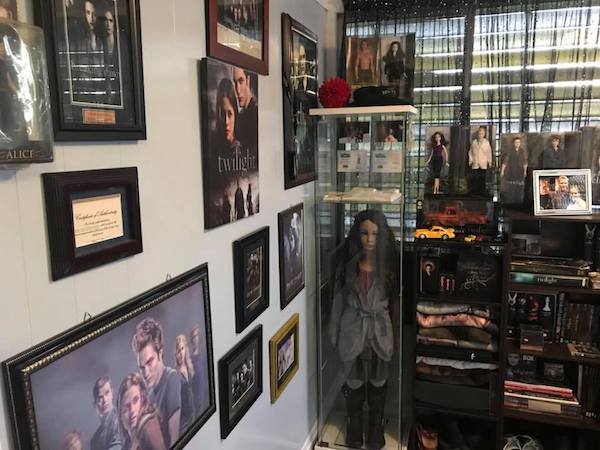
Kussrow has three Twilight tattoos, the first of which is a copy of the saga’s title from first book’s front cover. The next is Stewart’s signature, completed after meeting the actress in 2012. The third is the imprint of Kellan Lutz, who played Edward’s adoptive brother Emmett in all five films.
“I did have [Pattinson’s] signature on my arm all set to get inked, but as it was raining during the red carpet, it sadly washed off and I couldn’t get it permanently,” she adds.
Her credentials established, I asked her what drew her to the saga, and more importantly, what made her devote such a significant portion of her life to the story, its characters, and the world it imagined. The discussion quickly turned to Bella.
“She is giving and incredibly loyal, she literally gave up her life to be with Edward. That’s something to admire,” she says.
“That’s why it frustrated me so much when people say Bella is weak, she’s not, she’s the strongest person in the whole series, just so totally unafraid to be herself.
“That’s what all girls should aspire to be.”
Her claim caught me off guard. Ignoring outsiders who dismiss the tastes of young women without even interrogating the cause of their fandom, the number one qualm critics have with the series is Meyer’s characterisation of Bella. Her moody teen disaffection is supplemented by a weird clumsiness, some reviewers say, and a black hole where any other defining characteristics would usually be. But Bella isn’t just a Mary Sue reader surrogate, either: like matter and anti-matter, Bella is effectively annihilated upon contact with Edward. The vampire seems to suck every aspect out of her being. Well, apart from her blood.
Time after time, Edward warns Bella that their relationship could only end in her death. Just as many times, she forges ahead. That dynamic proved intoxicating to a generation of readers and moviegoers, but not everyone was so onboard with her literally finding something she loved and letting it kill her, especially a man whose overbearing tendencies bordered on oppressive. It remains a key argument used to question fan sentiments towards the series, and a counterpoint often fashioned against women in real life.
“Is there a stigma attached? Hell yeah there is,” Kussrow says.
“I see it everyday, it’s inescapable.”
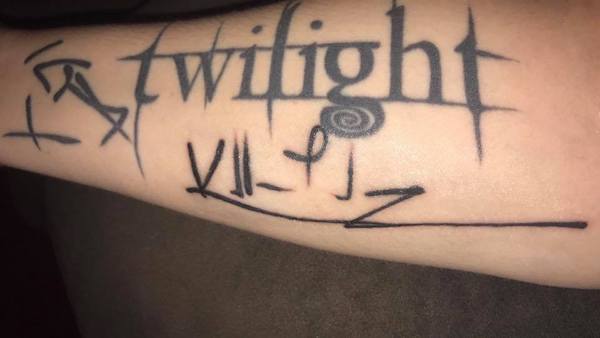
“The issue really is that many Twihards take this material at face value as some kind of representation of an ultimate and ideal romance,” says Joshua Bastian Cole, a Ph.D student at Cornell University.
There problem is what Cole characterises as “worrisome conservative ideologies unsubtly on display under a thinly veiled toxic and obsessive relationship.” Then, there’s the “obvious racism and strange fetishism around indigeneity,” an issue which was recently thrust back into the public arena by none other than Hardwicke, who says she actively lobbied Meyer for more diversity in her cast.
“The stalking and controlling, the weird abstinence thing, the horrific and deadly birth” are just a few of the other issues he has with Twilight.
“They are trash, and extremely problematic trash,” he tells me.
“But they are fun.”
Here’s the thing: Cole also has a Twilight tattoo on his arm. It’s a apple, with the word “Lion” written underneath. On his friend’s arm, there’s another apple, and the word “Lamb.”
“These allude to the overwrought lines, ‘And so the lion fell in love with the lamb,’” Cole says, adding “you have to take this hammy melodrama with a grain of salt.”
He is quick to add he has no regrets over the ink. The opposite is true.
“They felt like the right amount of Twilight,” he says.
“We had an affinity with the characters, while also understanding it as metaphor and recognizing its many flaws and failures.”
I ask about the reactions he receives to the tattoos from friends and peers, who might not share the same predilection towards the series.
“As a queer feminist trans man who is also a cinema scholar, it’s not really the go-to material people would imagine I actually like,” he says, adding “creative works become so much more than any intention the creator ever had for them.”
When first-time novelist Meyer penned Twilight, it’s hard to imagine her wading through online debates about her vampiric canon. The same goes for the outpouring of creativity and the community fostered by her work. Maybe a composite of the two is Twilight’s real legacy: for every critique which says Twilight presents a degrading relationship to teens, there’s a giddy campsite of young fans forming their own ties before for a premiere. For every dismissal of the power and importance of adolescent desires, there’s a bond formed between new adult friends on their pilgrimage to Forks. For each person who skips out of the saga before Bella actually seizes control of her own destiny, there’s a completionist who grows up to become a theatre scholar with “Lion” inked on their arm.
And maybe ‘crazy’ still applies, but fans now use it with a hint of wonder.
“Once again, some of my best friends now are people I’ve met through Twilight, and it’s crazy,” Hamilton says, fawning over last year’s trip from Melbourne to Washington. Across the Pacific, Galbraith says “maybe with the anniversary coming up… I’m sure it [could] gather us crazies again!”
She might be right. Hamilton says she’s now considering a ten-year anniversary post on her Twilight blog, which as lain dormant for nearly two years. Despite his “ambivalent” feelings towards the saga, Cole tells me a rewatch isn’t out of the question. “It’s on my mind now,” he says.
Forget the paraphernalia, collections, even the tattoos. “It’s my relationships with the people that I hold closest,” Kussrow says.
“All of us, all from different backgrounds, different countries, just forever bonded together from this thing that brought us all together.
“When Stephenie ended the book with “Forever” we took that seriously. Twilight is forever, and I’m damn proud to wear that “Forever” on my arm for everyone to see.”
